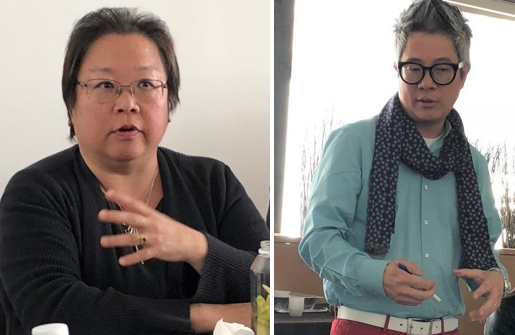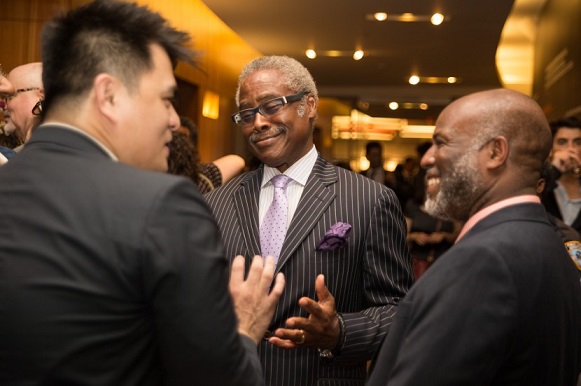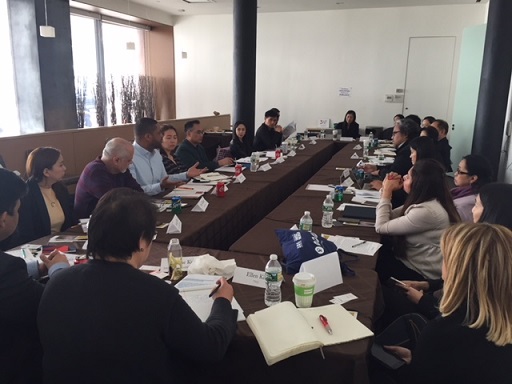Save the ethnic media: Immigration, digitalization seen as challenges
By Cristina DC PastorCommunity journalists and advertising agencies gathered in New York’s Chinatown district to examine challenges and trends and how they can work to make media organizations more sustainable.
The roundtable, held at the Museum of Chinese in America, was organized by the Asian American Advertising Federation (3AF), a national trade organization comprising advertising agencies, market advertisers, media companies and other industry specialists. About 15 news organizations were represented, including three from the Filipino American community: Asian Journal, The FilAm, and independent producer Jannelle So Perkins who hosts her own show in L.A.
3AF President Jay Kim, said, “Asian Americans are the fastest growing consumer segment, yet only a few savvy marketers are aware of the value and benefits of marketing to us…This is our community. This is our consumer. Asian media is the conduit to both.”
Daphne Kwok, vice president, of AARP’s Multicultural Markets and Engagement and a member of the 3AF board, stressed the need to support community media through advertising.
She said, “We’re so dependent on you the ethnic media as a way to reach our community, since mainstream media doesn’t pick us up. We need you to remain alive and so that’s why I’m very committed to helping it.”
There were several challenges voiced by journalists and advertisers alike. One was the strict immigration laws and how they are contributing to a “diminishing” Asian American community. Others raised the issue of digitalization and the generational disconnect between news producers who are mostly in their 50s and 60s, and millennials some of whom do not see value in the ethnic media.
“The community itself has solely been diminishing,” said Ellen Kim of the Korean TV station TKC. “It’s been sort of sizing down a bit and I think, a lot of national policies have had an impact on our community, with immigration, all these work visas (becoming) more strict we see less and less people coming in from Korea to live in the United States. I think that’s one issue that we’re facing right now.”

AARP’s Daphne Kwok, a member of the 3AF board, and 3AF President Jay Kim: ‘Asian Americans are a fast growing consumer segment.’ The FilAm Photos
Kay Youn, vice president of the South Asian network KBN, said there is a need for advertising agencies to get to know the different kinds of Asian markets. “Somewhere, I feel that they don’t know the South Asian (audience), so maybe that is one of the challenges,” she said.
Kaajal Mathur, multicultural strategist from DigiCultural with offices in Mumbai and New York, echoed the need for advertisers to educate themselves on the specific Asian markets they would like to work with so that “they are really putting their dollar where they’re supposed to go.”
From the advertising side, Naomi Defensor of DynAdmic said one of the biggest issues is measuring a news organization’s viewability. “If something is not viewable, then these dollars are just a waste of money,” she said.
The generational disconnect was introduced by Indrajit Majumdar of Zee TV, a network serving the Indian market. He said some Asian American millennials believe that “Asian media like us are primarily consumed by the older people, (and) the newer people are not watching it.”
Jimmy Gao of the Chinese language newspaper World Journal shared how the many different types of news platforms has been a challenge for his organization.
“Now, people have tons of choices and so the people who speak English, the more influential people … they Google and go to the Chinese news and the New York Times to the Chinese news. So, we’re losing a lot of those who are more educated and are more affluent readers,” he said.
Market researcher Iris Yim of Sparkle Insights and 3AF vice president conceded immigration from Asia may be slowing down “probably significantly,” and suggested making advertising more culturally relevant using the English language.
“We can no longer reliably rely on immigration to make our case for in-language advertising,” she said. “And if you look at the demographics, even for Chinese, Korean, Vietnamese, over 50 percent of them are proficient in English. So, I think we really need to do research and have data to make the business case of how it’s still important to talk to Asian-Americans of a culturally relevant way but you can also do it in English.”
© The FilAm 2018











